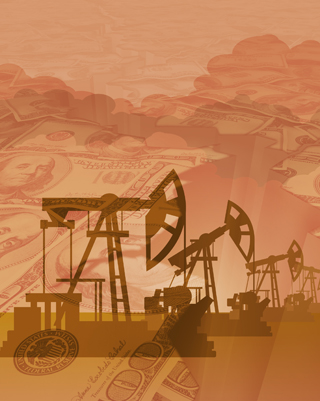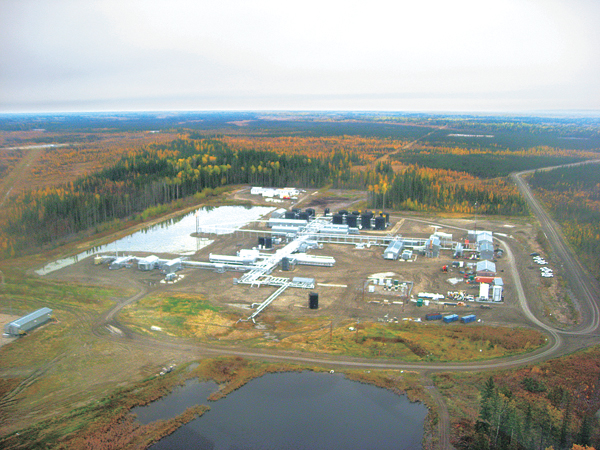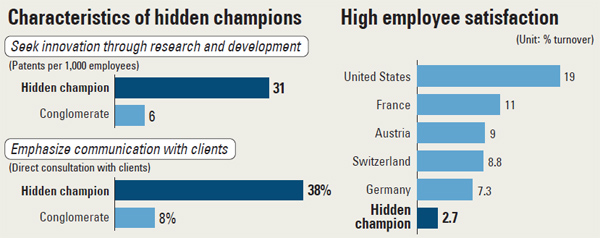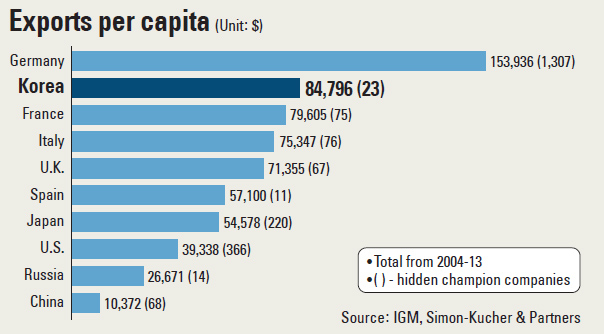Energy resources drive cost Korea billions

Politicians of both the ruling Saenuri Party and opposition party members accused the three state-run companies - the Korea National Oil Corporation (KNOC), Korea Gas Corporation (Kogas) and Korea Resources Corporation (Kores) - and former and current high-level civil servants at the Ministry of Trade, Industry and Energy for excessively promoting overseas natural resource development projects without properly screening their financial validity or true value as businesses.

The oil field of Korea National Oil Corporation’s Harvest Energy Trust in Newfoundland, Canada, which was bought in 2009. Provided by the company
The Lee administration pushed the state-run resource developers to land overseas projects during its five-year term, which ended in early 2013. It prided itself on its “resource diplomacy.”
After President Park Geun-hye took office, the focus shifted to the high level of debt run up by the three state-run developers.
Why was the Lee government’s push so wrong?
Energy analysts say a nation’s overseas resource development plan should be conducted over a long period of time and the policies related to it must stay consistent for at least a decade.
Above all, these projects shouldn’t be used for short-term political benefits.
Three liberal groups including Lawyers for a Democratic Society, the People’s Solidarity for Participatory Democracy and the Justice Party jointly accused six current and former CEOs of the three state-run resource developers of embezzlement and dereliction of duty. They filed their complaints with prosecutors on Nov. 4.
The groups say that their slapdash investment decisions resulted in a total loss of 35 trillion won ($32 billion) out of a total of 40 trillion won in government investments made during Lee’s five-year term.
The dubious investments in overseas-based oil, gas and mineral fields were a way for the Lee administration to regain public favor after a highly turbulent start. Early in Lee’s term, the administration suffered from his so-called bulldozer style of pushing through the restoration of American beef imports - which the public feared because of mad cow disease - and the four-rivers restoration project.
Government officials tried emphasizing Lee’s 2007 campaign pledge to boost the Korean economy through his great business skills.

The administration pushed the three state-run natural resource developers over three years to acquire foreign resource developers. During the three years, the government prepared a resource development budget worth more than 1 trillion won to fund the three public companies’ acquisitions of oil, gas and mineral fields and their owner companies.
In 2012, the Lee administration announced that the nation’s independent resource development rate had been boosted to 20 percent in that year and would go up to 35 percent by 2020.
In 2011, Korea developed about 13.7 percent of its oil and gas independently, compared to 4.2 percent in 2007.

Meanwhile, the three public developers ended up with high levels of debt after undertaking the investments to meet the administration’s goals. KNOC’s corporate debt was 18.5 trillion won last year, whereas Kogas recorded 34.7 trillion won and Kores 3 trillion won.
Analysts argue that KNOC’s acquisition of Canadian oil developer Harvest Energy Trust and its North Atlantic Refining Limited (NARL) facility was the most prominent example of the companies being pushed to buy as many resources as possible without doing due diligence.
“The Lee administration correctly suggested an overall policy direction to the three resource developers to purchase foreign oil, gas and mineral mines,” said Shin Hyun-don, a professor of energy resources engineering at Inha University and a former engineer at energy companies in Korea and Canada.
“The problem was that Lee pressured the companies into quickly buying new oil fields before his term came to an end, so they skipped the proper screening process on the oil fields.
“The Lee government’s goal to boost the nation’s independent resource development rate to 20 percent by 2012 didn’t really make sense,” he said. “The year of completing the goal was unnecessarily early.”
“Primary resource development projects are essential for Korea, which lacks natural resources,” said Chung Woong-tae, a research fellow at the Korea Energy Economics Institute. “But the NARL refinery incident created public distrust about the resource development industry as a whole.”
The NARL refinery came to the public’s attention after lawmakers revealed in mid-October that KNOC and the Energy Ministry sold off the Canada-based refinery for very little money, resulting in a loss of 2.5 trillion won to the Korean government. This sale was part of the company’s debt-reduction efforts.
In August, KNOC decided to sell its NARL plant to a U.S.-based investment advisory firm for 90 billion won on the condition that KNOC assumed the plant’s debt of about 1.2 trillion won. KNOC originally paid 1 trillion won for the plant in 2009. The entire deal - including Harvest and the small refinery - was worth about 4.5 trillion won.
In fact, the NARL facility wasn’t included in KNOC’s contract proposal in 2009. The company initially wanted to acquire Harvest Energy Trust for $2.85 billion. Harvest refused the deal, so KNOC proposed the following day that it would also buy the NARL refinery, which many Canadian energy analysts considered to be unprofitable. The Canadian company accepted the deal just a week after the initial proposal.
According to a report by Merrill Lynch’s Korean branch, KNOC paid an extra 474 billion won as a premium to expedite the process and obtain management rights. Because the government pushed KNOC to hurry the deal, the state-owned oil developer skipped basic due diligence and an on-site inspection.
Canada’s Globe and Mail newspaper called the NARL facility “a clunker of a refinery as part of the Harvest deal” in an article in September 2009. The article contained quotes from a Canadian investment analyst who said Canadian refineries saw an annual 33 percent profit margin drop, adding that he expected NARL’s future margins would face the same fate.
The facility was so old that KNOC had to spend a total of 350 billion won over four years just in maintenance.
In another example, Kores joined a local consortium for the Boleo copper mine project in Baja California, Mexico, which the company started with an initial investment of $76 million in 2008.
The project went into default in 2012 and Kores covered it up from the public and kept investing to keep the project going. It invested a total of 2 trillion won by early this year, according to Justice Party lawmaker Kim Je-nam.
A 2013 report from the consortium’s sponsor, the Ex-Im Bank of the United States, said the project failed because of various factors including inexperienced consortium members and technical mining issues.
“It is apparent that certain identified risks were not sufficiently vetted in the initial due diligence process, nor mitigated in the structuring phase, nor adequately managed by the responsible parties,” the bank wrote.
The default almost resulted in financial losses to Ex-Im Bank, but Kores and its fellow consortium members made a new financing contract to replace the bank’s loans, basically reimbursing the U.S. institution.
Opposition party lawmakers and industry analysts say that the NARL and Boleo’s case are just two examples among many found in the October parliamentary audit. Also, many of the oil projects pursued by the state-owned companies in the United States and the United Kingdom awarded investment evaluations to Merrill Lynch’s Seoul branch, skipping the usual bidding process.
“The Lee administration found out how expensive it can be to use resource development as political and diplomatic tools,” Shin commented. “Politicians and government officials shouldn’t fall for the temptation to using natural resource development issues as political events.”
Shin said Korea needs to come up with a more independent resource development management system, which can be run by experts with a deep understanding of the industry.
“Even if an oil or gas field undergoes careful, repetitive assessments, the future of these resource businesses is unpredictable. Many projects actually end up failing,” he said. “In the long term, that is why Korea needs to keep investing in resource development.
“Also, that’s why we need a group of independent experts who can consistently push through the national resource development plan - even if an administration changes. The plan needs to consider resources from various points of view, not just from the economic impact but also for the nation’s future. So far, Korea barely had such a plan in the past.”
But Chung of the Korea Energy Economics Institute argued that politicians and the public should refrain from criticizing these projects before they need time to mature.
“The resource development businesses, by its nature, usually continue through the long term,” he said. “The Lee administration’s projects started out in 2008. Considering the industry’s value chain, we [analysts] typically say it takes about a decade to start seeing returns. This is the nature of resource development businesses.”
“Resource development needs huge costs in the earlier stages of its businesses,” said Shin. “After acquisition of an oil field, exploration to locate the location of the oil takes about five years. Then, oil developers need to take another five years to prepare for actual oil production. The companies need to continue investing throughout the total 10-year cycle.”
Chung also emphasized that the resource development industry is highly sensitive to external factors like oil prices and geopolitical situations in oil-producing countries.
“Like any other price theories, oil prices show a cyclical pattern. The oil price was low since 2012, so it is dangerous to sell Korean-owned oil fields just because of the current oil prices. The oil market typically considers that the oil price can double and even triple over the price in low times,” added Chung. “Korea also underwent similar experiences. KNOC was told to sell the Vietnam 15-1 oil field a few years ago. Once the company kept it, the oil field has seen its value rebound.”
BY KIM JI-YOON [jiyoon.kim@joongang.co.kr]










with the Korea JoongAng Daily
To write comments, please log in to one of the accounts.
Standards Board Policy (0/250자)